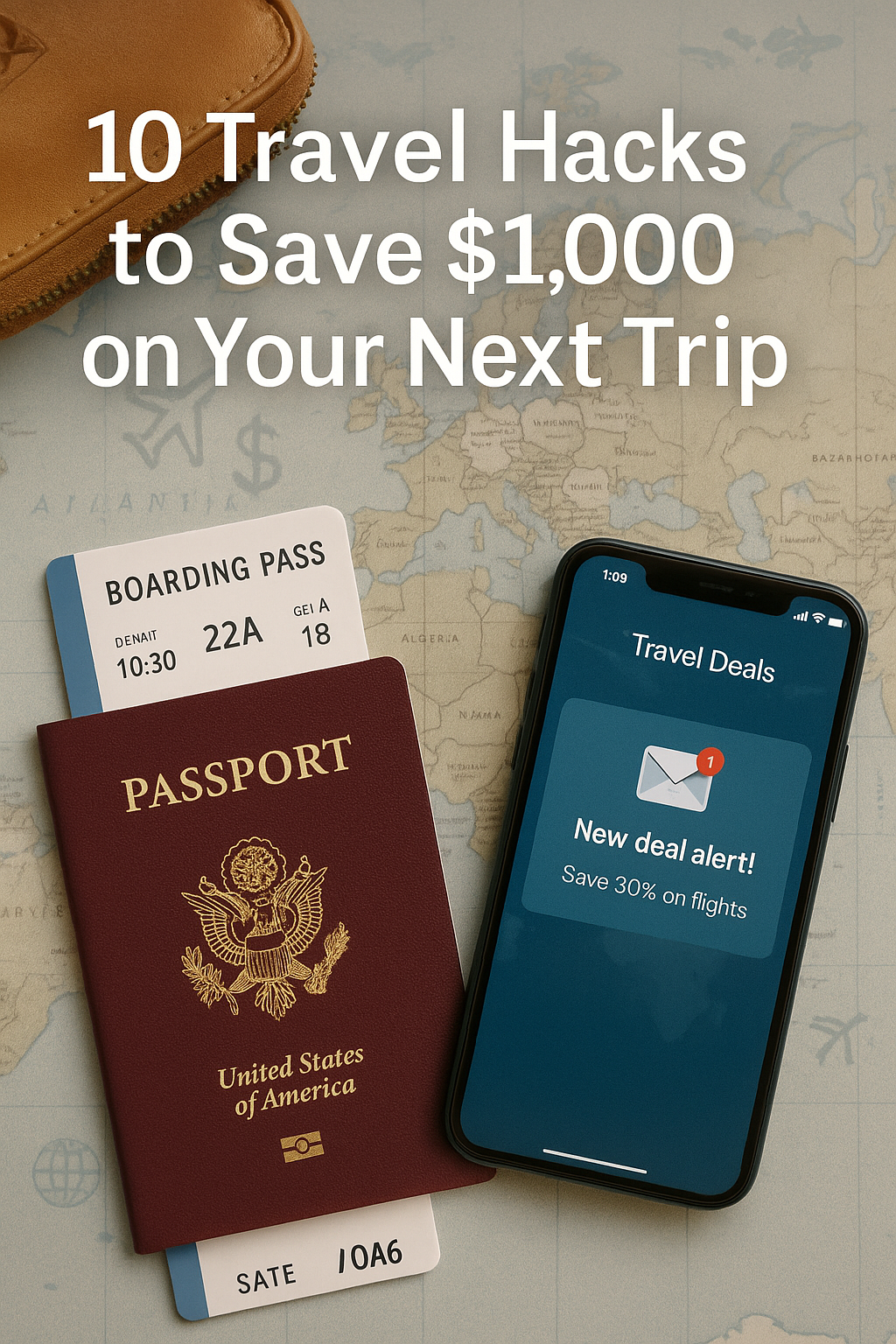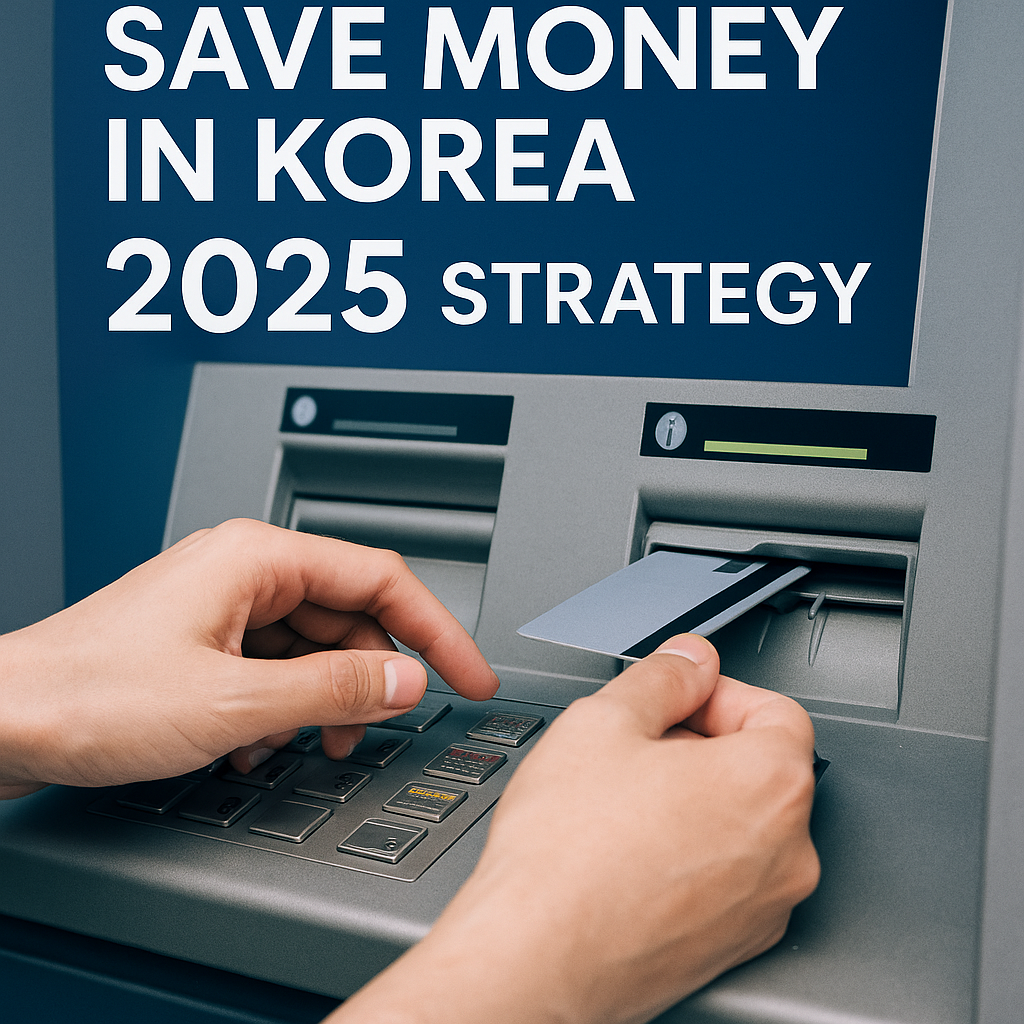In an era of rising travel expenses, small savings can add up to significant benefits. By using strategic hacks—advanced planning, savvy spending, and smart apps—you can realistically shave off at least $1,000 from your next trip’s total cost. Here are ten proven methods to maximize value without compromising your experience:
- Set Fare Alerts:
Sign up for Google Flights, Skyscanner, and Hopper notifications. Track price changes and book once fares drop by 10%–15%. On average, travelers save $50–$100 on a round-trip ticket this way. - Flexible Dates & Destinations:
Depart midweek or during shoulder seasons. Adjusting your schedule by just one or two days can cut airfare and accommodation costs by up to 20%. - Leverage Loyalty Points & Miles:
Enroll in frequent flyer and hotel loyalty programs. Transfer credit card points (e.g., Chase Ultimate Rewards, Amex Membership Rewards) to airlines or hotel partners to cover flights or nights, potentially saving hundreds of dollars. - Use Incognito Mode for Booking:
Airline and OTA sites often show higher prices based on your browsing history. Always search and book in a private browser window to see the lowest available rates. - Optimize Mobile Data & Roaming:
Purchase an eSIM or local prepaid SIM for data. Plans start around $10/week, compared to $50+ for standard roaming. Use apps like Airalo or local carriers to stay connected affordably. - Cashback & Voucher Portals:
Access portals like Rakuten, Swagbucks, and Honey when booking hotels or tours. Earn 5%–10% cashback, which can translate to $50–$200 in savings per trip. - Choose Secondary Airports & Routes:
Flying into smaller, nearby airports often yields lower fees. Compare alternate entry points and factor in ground transport; savings may exceed $50–$150. - Pack Light & Avoid Checked Bag Fees:
Limit luggage to a carry-on and personal item. Airlines charge $30–$60 per checked bag each way. Carry-on-only packing hacks—like cube compression and versatile layering—save you $100+. - Dine Like a Local:
Skip tourist hotspots. Seek street markets and casual eateries where meals cost 30%–50% less. Sampling authentic cuisine saves $20–$40 per meal. - Maximize Travel Credit Cards:
Use cards offering 3%–5% back on travel-related purchases. Combine sign-up bonuses, category multipliers, and fee rebates to recover hundreds of dollars annually. Always pay balances in full to avoid interest.
By integrating these hacks into your travel workflow—setting alerts, booking smart, and leveraging rewards—you can stretch your budget, unlock new experiences, and keep unexpected costs at bay. Happy travels!
다음 여행에서 $1,000 절약하는 10가지 트래블 핵
여행 경비가 상승하는 시대에, 작은 절약이 큰 효과를 낼 수 있다. 사전 계획, 현명한 지출, 스마트 앱 활용을 통해 다음 여행 경비에서 최소 $1,000을 절약할 수 있는 10가지 검증된 방법을 소개한다.
- 요금 알림 설정:
Google Flights, Skyscanner, Hopper 알림을 받아보며 10%–15% 요금 하락 시 예약한다. 왕복 항공권당 평균 $50–$100 절약 가능하다. - 날짜 및 목적지 유연성:
주중 출발 또는 성수기 전후 시즌 이용. 하루 이틀 일정만 조정해도 항공권 및 숙박비를 최대 20% 절약할 수 있다. - 포인트 및 마일리지 활용:
항공사·호텔 로열티 프로그램 가입. Chase Ultimate Rewards, Amex Membership Rewards 등 신용카드 포인트를 항공·호텔 파트너로 전환해 항공권 또는 숙박을 ‘공짜’로 얻을 수 있다. - 시크릿 모드로 예약:
사이트가 이전 방문 내역을 바탕으로 요금을 높여 표시할 수 있다. 항상 프라이빗 창에서 검색해 최저가를 확인한다. - 모바일 데이터 최적화:
eSIM 또는 현지 선불 SIM 구매. 주당 약 $10에 데이터 사용이 가능하며 일반 로밍 요금($50 이상) 대비 저렴하다. Airalo 등 앱 활용 추천. - 캐시백 및 바우처 포털:
호텔·투어 예약 시 Rakuten, Swagbucks, Honey 등 포털 경유해 5%–10% 캐시백 확보. 여행당 $50–$200 절약할 수 있다. - 보조 공항 및 루트 선택:
주요 공항 대신 인근 소규모 공항 이용. 지상 이동 비용을 고려해도 대개 $50–$150 절약 가능하다. - 핸드 캐리만으로 포장:
기내 반입 수하물과 개인 가방만 사용해 위탁 수하물 요금($30–$60/편)을 피한다. 압축 큐브, 다용도 레이어링 팩으로 $100 이상 절약. - 현지식 맛보기:
관광객 몰리는 식당 대신 길거리 음식점·소박한 식당 이용. 한 끼당 30%–50% 저렴하며 $20–$40 절약 가능하다. - 트래블 카드 활용 극대화:
여행 관련 지출에 3%–5% 캐시백 제공 카드 사용. 가입 보너스, 카테고리 보너스, 수수료 환급 혜택을 조합해 연간 수백 달러 회수. 잔액은 반드시 전액 결제.
이 핵심 팁을 활용해 요금 알림, 스마트 예약, 리워드 극대화를 실천하면 여행 예산을 확장하고 예상치 못한 지출을 줄일 수 있다. 즐거운 여행 되시길!

